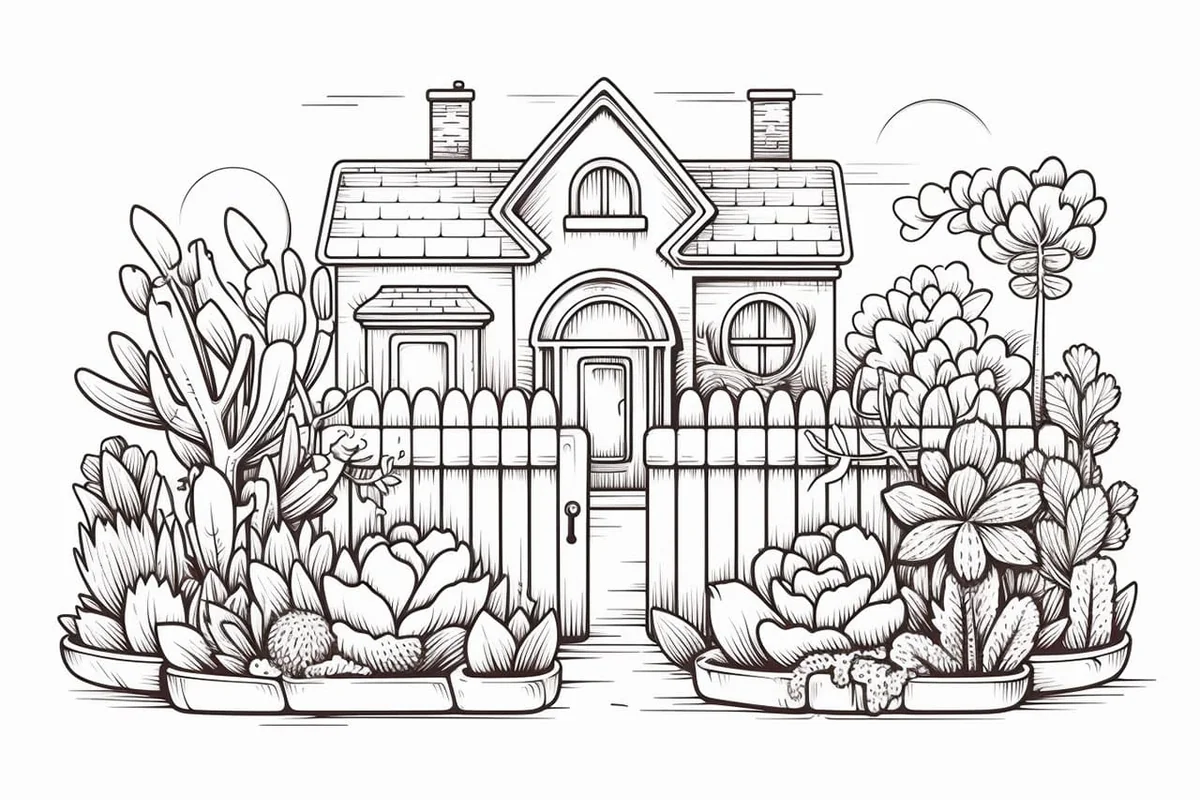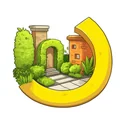How to Draw a Garden in 7 Simple Steps
Learn how to draw with this step-by-step tutorial.

Materials You'll Need
- Drawing paper
- Pencil (HB or 2B)
- Eraser
- Colored pencils
- Markers

Welcome to our delightful step-by-step guide on how to draw a garden, a perfect fusion of art and the beauty of nature! Whether you're an aspiring artist seeking to hone your skills or simply looking for a joyful way to express your creativity, this tutorial will guide you through the enchanting process of creating a stunning garden drawing. By the end of it, you'll not only enhance your artistic abilities but also find a refreshing sense of calm and satisfaction.
Drawing a garden allows you to explore limitless possibilities, from vibrant flowers to majestic trees and serene pathways. Gardens are a reflection of nature's artistry, and through this guide, you'll learn to capture their charm on paper. As you embark on this creative journey, let your imagination flourish while you discover the intricacies of composition, perspective, and detail.
Before we jump into our garden drawing, it's essential to gather the right materials to set the stage for your artistic endeavor. Preparedness will ease your creative process and help you focus on the joyful act of drawing. So, make sure you have everything ready as we plant the seeds of creativity and begin nurturing your artistic skills!
Materials Required
Before we begin, gather the following materials:
-
Drawing paper or sketchbook
-
Pencil (preferably a HB or 2B)
-
Eraser
-
Fine-tip black pen or marker (optional)
-
Colored pencils or markers (optional)
Now that you have your materials ready, let's dive into the world of garden drawing!
Step 1: Start with the Horizon Line
To create depth in your garden drawing, begin by lightly drawing a horizontal line towards the middle of your paper. This line will act as the horizon line and help establish the perspective of the scene.
Step 2: Sketch the Background
Next, start sketching the background elements of your garden. Begin with the larger elements such as trees, hedges, or fences. Use basic geometric shapes to outline these elements before adding more details. Remember to use light and loose strokes at this stage, as you can refine the details later.
Step 3: Add Focal Points
Now, focus on adding focal points to your garden. These could be structures like a gazebo, fountain, or a garden bench. Select one or two elements that will be the main focal points of your drawing and sketch them accordingly. Pay attention to proportions and placement to achieve a balanced composition.
Step 4: Add Greenery and Flowers
Gardens are known for their lush greenery and vibrant flowers. Start adding plants, shrubs, and flowers to your drawing. Observe the shapes and textures of different plants and try to replicate them in your sketch. Use curved and flowing lines to represent leaves and petals.
Step 5: Create Depth and Perspective
To make your garden drawing more realistic, add depth and perspective to the scene. Use shading techniques to create shadows and highlights, giving your drawing a three-dimensional look. Darken areas that are closer to you and use lighter strokes for objects in the distance.
Step 6: Finalize the Details
Now it's time to refine the details of your garden drawing. Add smaller elements such as rocks, pathways, or stepping stones. Pay attention to textures and patterns, such as the roughness of rocks or the smoothness of pebbles. Take your time to add any additional details that will enhance the overall look of your artwork.
Step 7: Ink or Color (Optional)
If you prefer a more defined look, you can outline your drawing using a fine-tip black pen or marker. This step is optional but can help make your garden drawing stand out. Alternatively, you can also use colored pencils or markers to add vibrant hues to your artwork. Experiment with different color combinations and shading techniques to bring your garden to life.
Tip: To effectively capture the essence of a garden in your drawing, start by breaking down the scene into simple shapes. Use light pencil strokes to sketch the basic outlines of flowers, trees, and pathways, focusing on their overall forms rather than intricate details at first. This will help you establish a balanced composition and ensure that all elements fit harmoniously within your drawing. Once you're satisfied with the layout, gradually add layers of detail, using a variety of line weights to suggest depth and texture—thicker lines for foreground elements and lighter ones for those in the background. Lastly, don't forget to incorporate shading to give your garden a three-dimensional feel; try using cross-hatching or stippling techniques to create depth in areas like shadows under foliage or behind garden structures. Happy drawing!
Conclusion
Congratulations! You have now learned how to draw a garden. By following these step-by-step instructions, you can create a beautiful garden drawing that showcases your artistic skills. Remember to have fun and let your creativity flow as you bring your garden to life on paper.
Fun Facts About Gardens
-
Gardens have been a part of human history for thousands of years, with some of the oldest known gardens dating back to ancient Egypt.
-
The Hanging Gardens of Babylon, considered one of the Seven Wonders of the Ancient World, are still a subject of fascination and debate among historians.
-
Community gardens promote local food production and provide urban neighborhoods with green spaces.
-
Gardens are known to have therapeutic effects, often used in horticultural therapy for stress reduction and healing.
-
The largest garden in the world is Dubai Miracle Garden, featuring over 50 million blooms arranged in elaborate designs.
-
Victory gardens were planted during World War I and II in the U.S. and UK to supplement food rations and boost morale.
-
Monet's Giverny garden, with its famous water lilies, inspired a series of paintings that are celebrated worldwide.
-
The word "garden" originates from the Old English "geard" meaning enclosure or yard.
-
Vertical gardens, also known as living walls, allow people to grow plants in small, urban spaces.
-
The Royal Botanic Gardens, Kew, located in London, holds the largest and most diverse collection of plants in the world.
Suggestions for Scenes and Settings for Garden Drawings
-
Secret Garden Path: Draw a winding stone path through a lush, overgrown garden, with mysterious doors hidden among the foliage.
-
Butterfly Haven: Illustrate a vibrant garden full of colorful flowers, alive with butterflies fluttering from bloom to bloom.
-
Ancient Herb Garden: Picture a historic medieval-style herb garden complete with medicinal plants and a quaint stone cottage.
-
Modern Urban Oasis: Create a rooftop garden with sleek planters and cityscape views, offering a peaceful retreat from urban hustle.
-
Enchanted Night Garden: Design a magical nighttime scene with glowing plants and twinkling fairy lights that cast mystical shadows.
-
Japanese Zen Garden: Sketch a serene space with perfectly raked sand, carefully placed stones, and a peaceful koi pond.
-
Garden Tea Party: Visualize a whimsical tea party scene with curved archways of flowering vines and eclectic tea sets scattered on picnic blankets.
-
Wildflower Wonderland: Depict a sprawling meadow filled with diverse wildflowers, fluttering bees, and chirping crickets.
-
Community Garden Hub: Illustrate a bustling community garden with people of all ages tending to their plots and sharing gardening tips.
-
Fairy Village Garden: Imagine a tiny fairy village nestled within flowerbeds, complete with miniature houses made of leaves and twigs.